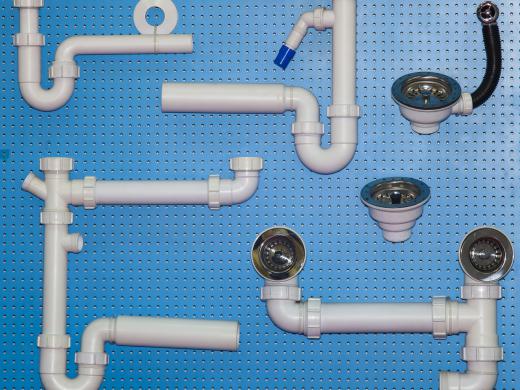Gas traps are devices that are used as part of drain and pipe systems as a means of minimizing the escape of gaseous fumes from those systems. A gas trap can be found on such diverse systems as the plumbing for the kitchen sink and the sewage line that leads away from a building and to the main sewage system in a city or town. The action of the trap often occurs due to the structural design of the device, rather than relying on the inclusion of filters.
A good example of a basic gas trap is found with the configuration of the pipes and drain connected with a sink. As part of the overall design, a section of the pipe is bent at an angle that creates a chamber within the pipe system. The presence of this chamber allows water to flow through the pipe, creating a barrier that prevents gases from emerging from the drain and into the surrounding space. A trap of this type requires nothing more than the flow of water through the drain and into the pipe system in order to keep noxious gases from the sewage system from leaking out of the drain.

One of the reasons that the gas trap on this type of drainage system may fail has to do with the development of what is known as a dry trap. This is a situation in which no water flows through the pipe for an extended period of time. Correcting the situation usually requires nothing more than running fresh water through the lines, and thus re-establishing the filtering action of the trap.

The same general principle of blocking the flow of gas is found with other forms of the gas trap. A natural gas trap may include components that make it possible to open and close a section of pipe, thus impeding the ability of the gas to move through the system. Fittings of this type are often used with heating systems that are powered by natural gas, making it possible to shut down the flow of the gas when repairs to the system are needed, or when the heating system is not in use for extended periods of time.
Just about every type of gas trap is designed to prevent the escape of gas into an area where the fumes could cause some amount of distress or damage. Along with the traps found in plumbing designs and those used to manage the flow of gas through heating systems and devices, there are also traps of this type found in some engine designs, as part of the safety measures taken in mining situations, and even in some ventilation systems. Most of the designs are fairly simplistic, and require little to no maintenance in order to effectively block the flow of fumes.

